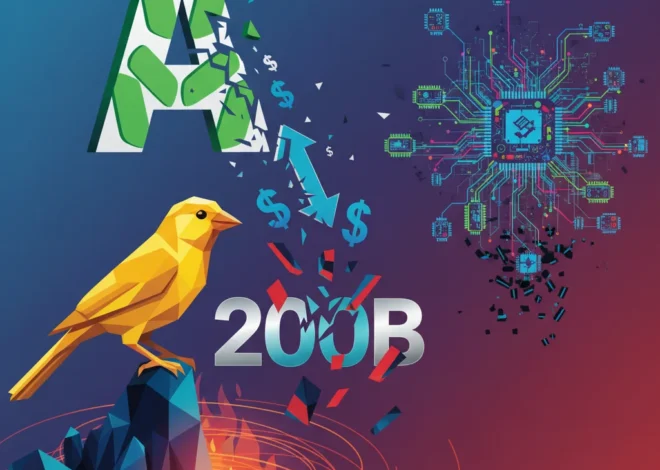
The UK’s Fiscal Tightrope: Will the “Tax Lock” Promise Hold in a Shifting Economy?
In the world of politics and economics, promises are the currency of trust. For the UK government, one of the most significant pledges has been the “tax lock”—a firm commitment not to raise the rates of Income Tax, National Insurance, or Value Added Tax (VAT). Yet, as the nation navigates a complex economic landscape, whispers from experts are growing louder, suggesting this cornerstone promise may be under threat. According to a recent BBC report, some analysts believe the government could be forced to reconsider its stance, creating a wave of uncertainty for individuals, investors, and the wider UK economy.
This isn’t just a political debate; it’s a critical issue that touches every aspect of personal and corporate finance. A potential shift in tax policy could redefine investment strategies, alter consumer behaviour, and reshape the UK’s economic trajectory. In this comprehensive analysis, we will dissect the pillars of the UK tax system, explore the immense pressures forcing a potential policy re-evaluation, and forecast the ripple effects across the stock market, banking, and the burgeoning fintech sector.
Understanding the Three Pillars: A Breakdown of UK Core Taxes
To grasp the gravity of the “tax lock” promise, it’s essential to understand the three taxes it covers. These are not just lines on a payslip or a receipt; they are the primary engines funding the UK’s public services, from healthcare to infrastructure.
1. Income Tax
Income Tax is the government’s largest single source of revenue. It’s a progressive tax levied on most forms of income, including employment wages, pensions, and some savings interest. The system is designed so that higher earners contribute a larger percentage of their income. The thresholds at which these rates apply are a critical policy lever.
2. National Insurance (NI)
Often mistaken for just another tax, National Insurance contributions (NICs) are technically social security payments. They build an individual’s entitlement to certain state benefits, such as the State Pension and maternity allowance. Both employees and employers pay NI, making it a significant factor in both personal take-home pay and a company’s cost of employment.
3. Value Added Tax (VAT)
VAT is a consumption tax applied to the price of most goods and services. The standard rate in the UK is 20%. Because it’s levied on transactions rather than income, it has a broad and immediate impact on consumer spending and inflation, making it a powerful but politically sensitive tool in fiscal policy.
Here is a simplified overview of the current Income Tax and National Insurance rates for the 2024/2025 tax year in England, Wales, and Northern Ireland (Scotland has its own income tax bands).
| Category | Threshold / Band | Rate |
|---|---|---|
| Personal Allowance | Up to £12,570 | 0% |
| Income Tax (Basic Rate) | £12,571 to £50,270 | 20% |
| Income Tax (Higher Rate) | £50,271 to £125,140 | 40% |
| Income Tax (Additional Rate) | Over £125,140 | 45% |
| Employee National Insurance | £12,570 to £50,270 | 8% |
| Employee National Insurance | Above £50,270 | 2% |
Note: These rates are subject to change based on government policy. For the most current figures, please refer to the official GOV.UK website.
Beyond the Bloodshed: The Economic Collapse of Sudan and Its Global Ripple Effect
The Economic Gauntlet: Why the Tax Promise is Under Intense Pressure
A promise made in a stable economic climate is easy to keep. The UK, however, is contending with a confluence of challenges that are severely testing the government’s fiscal resolve.
- Sustained High Government Debt: The economic shocks of the pandemic and the subsequent energy crisis necessitated unprecedented government spending. This has left the UK with a national debt that, according to the Office for Budget Responsibility (OBR), stood at 97.7% of GDP at the end of the 2023-24 fiscal year. Servicing this debt is a colossal annual expense that constrains spending in other areas.
- Stubborn Inflation and Interest Rates: While inflation has fallen from its peak, its effects linger. Higher prices have increased the cost of public services and debt interest payments. The Bank of England’s response—raising interest rates—has slowed the economy and made government borrowing even more expensive.
- Demands on Public Services: An ageing population and post-pandemic backlogs have placed immense strain on the NHS and social care systems. These services require vast and growing sums of money, creating a difficult choice between raising revenue, cutting services, or borrowing more.
- Anemic Economic Growth: The ultimate solution to fiscal woes is a robustly growing economy, which naturally expands the tax base. However, the UK has faced sluggish growth, making it difficult to “grow its way out” of the problem without resorting to tax hikes or spending cuts. This slow growth is a central concern in the field of modern economics.
Market Tremors: The Ripple Effects on Investing, Banking, and Fintech
Any change—or even the credible threat of a change—to the UK’s core tax structure sends ripples through every corner of the financial world. The implications extend far beyond an individual’s monthly payslip.
Impact on Investing and the Stock Market
For those involved in investing and trading, tax policy is a fundamental variable. An increase in Income Tax or NI would directly reduce the disposable income of millions of consumers. This could lead to a slowdown in consumer spending, hitting retail, hospitality, and consumer discretionary stocks particularly hard. The stock market, as a forward-looking mechanism, would likely price in this risk, leading to increased volatility.
Furthermore, an increase in employer’s NI contributions would raise the cost of labour, squeezing corporate profit margins. This could make UK equities less attractive to both domestic and international investors, potentially impacting valuations across the FTSE indices. A stable and predictable tax environment is a cornerstone of investor confidence; uncertainty is its enemy.
Beyond the Bottom Line: How Next's £1.1bn Profit Forecast Reveals the New Rules of Retail Resilience
Implications for Banking and Business
The banking sector is a barometer of economic health. A tax hike that dampens consumer and business confidence could lead to lower demand for loans and mortgages. For businesses, higher taxes could curtail expansion and hiring plans. A potential VAT increase, in particular, would be a complex challenge, forcing businesses to either absorb the cost (hitting profits) or pass it on to consumers (risking lower sales volume). This creates a challenging environment for corporate finance and strategic planning.
Opportunities for Financial Technology (Fintech)
Where there is complexity, there is opportunity for innovation. A shifting tax landscape could accelerate the adoption of financial technology.
- Tax-Tech: Fintech firms specializing in tax optimization and automated accounting would see increased demand from both individuals and businesses trying to navigate the new rules.
- Wealth Management Platforms: Digital investment platforms that help users maximize tax-efficient wrappers like ISAs and SIPPs would become even more valuable.
- Blockchain and Transparency: On a more speculative note, discussions around tax often bring up the potential for new technologies. Proponents of blockchain argue it could one day offer a hyper-transparent and efficient way for governments to collect taxes and for citizens to see how their money is used, though this remains a long-term vision.
Navigating the Uncertainty: Actionable Strategies for a Fluid Environment
While the future of UK tax policy remains uncertain, proactive planning can mitigate risk and uncover opportunities. Individuals, investors, and business leaders should not wait for an official announcement to begin strategizing.
- For Individuals: Maximize Tax Efficiency. Now is the time to ensure you are making full use of your annual ISA and pension allowances. These tax-advantaged accounts are powerful tools for shielding savings and investments from income and capital gains tax, regardless of future rate changes.
- For Investors: Diversify and Stay Informed. A well-diversified portfolio is the best defense against sector-specific downturns. Consider exposure to international markets to reduce dependence on the UK consumer economy. Stay abreast of macroeconomic indicators and fiscal policy announcements to inform your trading decisions.
- For Business Leaders: Conduct Scenario Planning. Businesses should model the potential impact of various tax scenarios—a 1p rise in NI, a 2% hike in VAT—on their cash flow, pricing, and profitability. This proactive approach to finance allows for agility in the face of policy shifts.
Conclusion: The Inescapable Choice
The UK government stands at a fiscal crossroads. On one path lies a politically popular promise—the “tax lock.” On the other lies the stark reality of a high-debt, low-growth economy in need of sustainable funding for its public services. The tension between these two paths is becoming untenable. While breaking a core promise carries significant political risk, the economic consequences of inaction could be even greater.
For everyone from the everyday saver to the institutional investor, the message is clear: the era of predictable, stable tax policy may be pausing. The coming months will demand vigilance, strategic financial planning, and an understanding that in today’s global economy, the only certainty is change itself. The decisions made will not only define the government’s legacy but will also shape the financial landscape of the UK for years to come.


